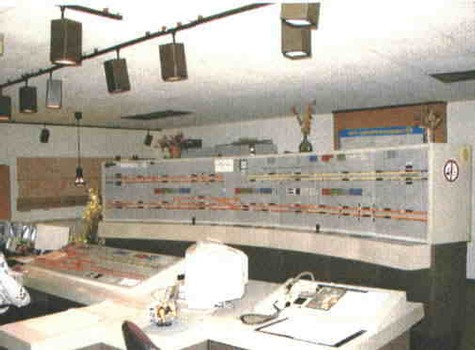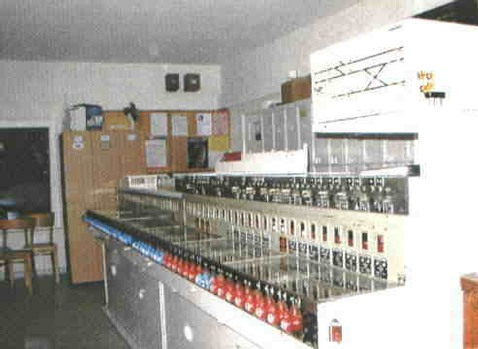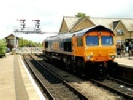



|
S 1 |
Wedel - |
|
S 11 |
Blankenese - |
|
S 2 |
Altona - |
|
S 21 |
Elbgaustrae - |
|
S 3 |
Pinneberg - |
|
S 31 |
Altona - |
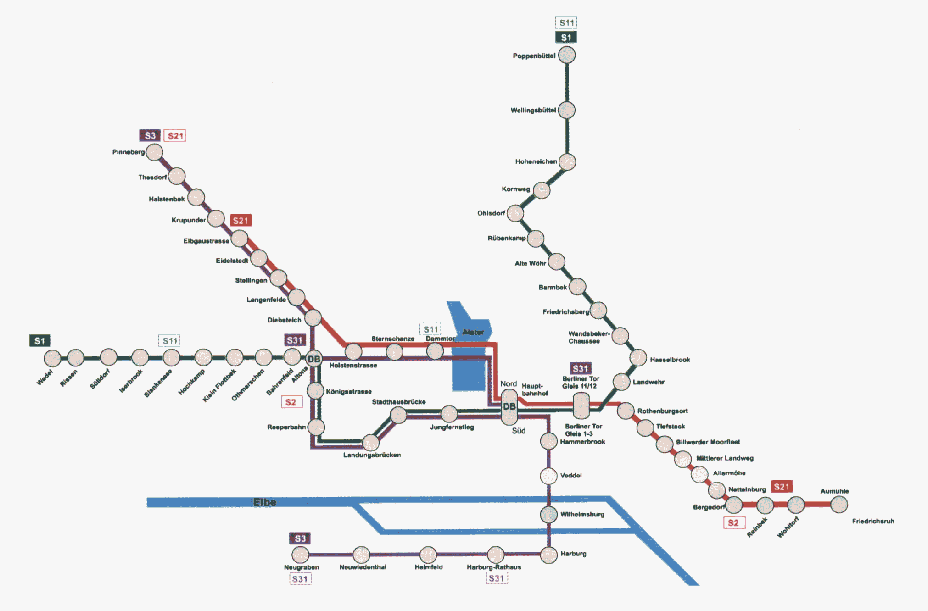
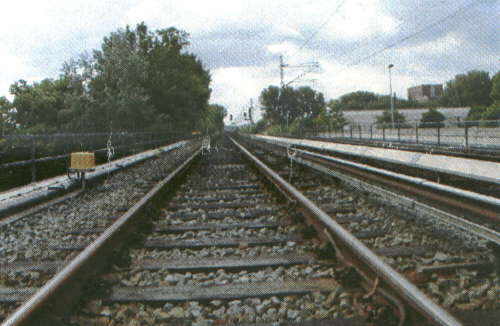
|
Class |
In- |
Number of Units: |
|
471 |
1939 - |
73 |
|
470 |
1959 - |
45 |
|
472 |
1974 - |
62 |
|
474 |
1996 - |
103 |
|
Signal Box |
Control Area |
Type |
|
Pinneberg |
Pinneberg station area, lines S3 & S21 |
Panel |
|
Elbgaustraße |
Diebsteich - |
Panel |
|
Altona |
Holstenstrae - |
Panel |
|
|
Holstenstraße - |
|
|
|
Reeperbahn - |
|
|
Klein Flottbek |
Klein Flottbek station area, lines S1 & S11 |
Electro- |
|
Hochkamp |
Hochkamp station area, lines S1 & S11 |
Electro- |
|
Blankenese |
Blankenese station area, lines S1 & S11 |
Electro- |
|
Slldorf |
Slldorf station area, lines S1 & S11 |
Mechanical |
|
Wedel |
Wedel to Rissen, line S1 |
Panel |
|
Hamburg Hbf |
Berliner Tor - |
Panel |
|
|
Hammerbrook - |
|
|
|
Berliner Tor - |
|
|
|
Hammerbrook - |
|
|
Hasselbrook |
Hasselbrook station area |
Electro- |
|
Barmbek |
Barmbek station area, lines S1 & S11 |
Electro- |
|
Ohlsdorf |
Ohlsdorf station area, lines S1 & S11 |
Electro- |
|
Poppenbttel |
Poppenbttel station area, lines S1 & S11 |
Electro- |
|
Bergedorf |
Berliner Tor - |
IECC |
|
Willhelmsburg |
Willhelmsburg station area, lines S3 & S31 |
Panel |
|
Harburg Rathas |
Hammerbrook - |
Panel |
|
Neugraben |
Hausbruch - |
Panel |
|
|
|
|
Panel Signalbox at Harburg Rathaus |
Electoro- |
